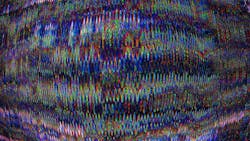Reduce the Acoustic Noise Effect from Class II MLCC Vibration (.PDF Download)
System speeds across all platforms continue to escalate. It’s expected that a 5G smartphone will need more than 30% overall capacitance than a 4G equivalent—an increase that’s akin to what’s happening with other applications across the industry. As a result, multi-layer ceramic capacitors (MLCCs) have become more popular than ever in many types of designs.
With this unavoidable surge in MLCC usage, the acoustic noise effect of MLCCs has become more commonly seen recently. Especially for consumer devices such as laptops and cell phones, which are often used in quiet settings, the MLCC acoustic noise from these products gives the impression of poor product quality and thus is utterly unacceptable to end users. This article will present practical design strategies to circumvent this effect, as well as introduce some commercially available low acoustic MLCC solutions.
